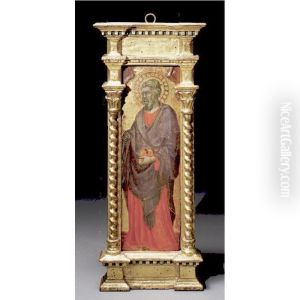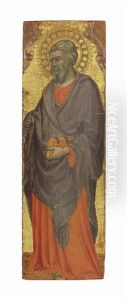Benedetto Di Bindo Paintings
Benedetto di Bindo was an Italian painter who worked during the early 15th century, primarily in Siena. He was born around 1380, though the exact date is not known. Benedetto was active in the tradition of Sienese painting, which was characterized by its emphasis on decorative style, elegance, and an affinity for rich color and intricate patterns. This tradition stood somewhat apart from the Florentine emphasis on the study of anatomy and perspective that was growing in popularity at the time.
Benedetto's work is not as well-documented as that of some of his contemporaries, and as a result, less is known about his life compared to more prominent artists of his era. He is believed to have been a pupil of Taddeo di Bartolo, who was one of the leading painters in Siena during the late 14th and early 15th centuries. Working within the established Sienese tradition, Benedetto di Bindo contributed to the decoration of several important buildings in Siena, including frescoes in the Palazzo Pubblico.
His style was conservative for his time, reflecting the Gothic influences that were prevalent in Sienese art prior to the Renaissance. Benedetto's paintings are noted for their vivid color, delicate ornamentation, and the graceful figures that often populate his religious scenes. However, Benedetto di Bindo's work did not have the lasting impact of some of his contemporaries, and as such, he is considered a lesser-known figure in the history of Italian painting.
Benedetto di Bindo's death is recorded as around 1417, although, like many details of his life, the exact circumstances of his death are not well-documented. His surviving works, though limited, provide insight into the Sienese painting style at the cusp of the Renaissance and reflect the continuation of a tradition that was eventually overshadowed by the new artistic developments emerging from other Italian city-states like Florence.

